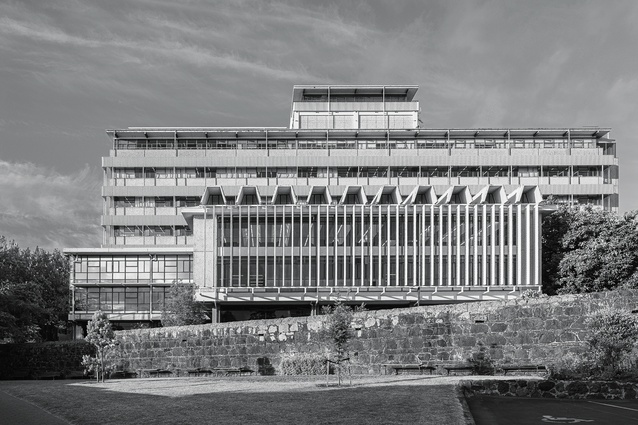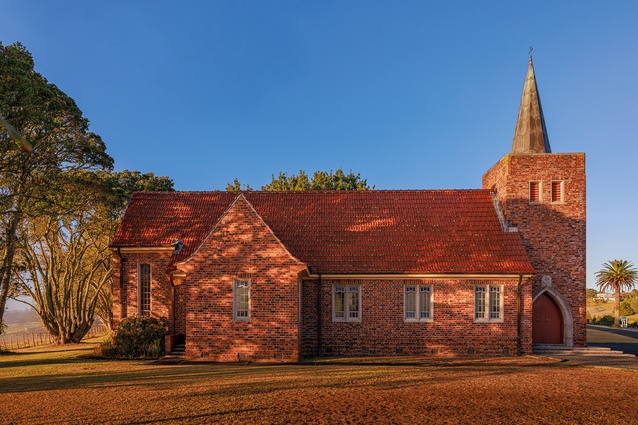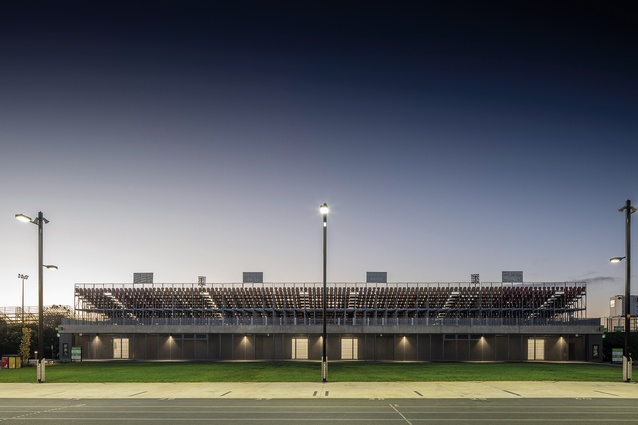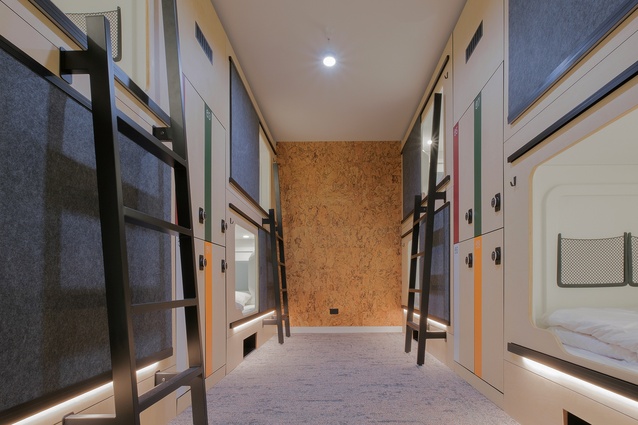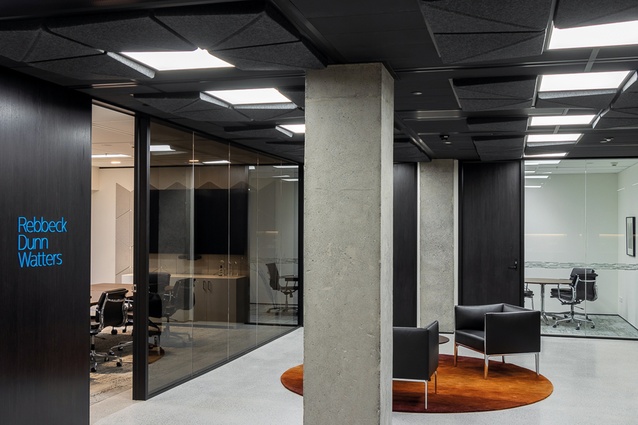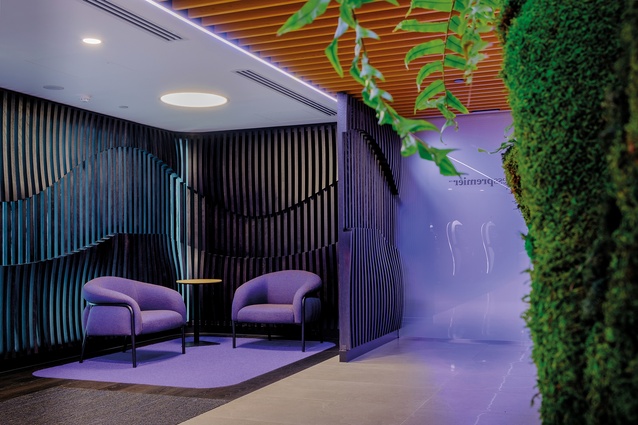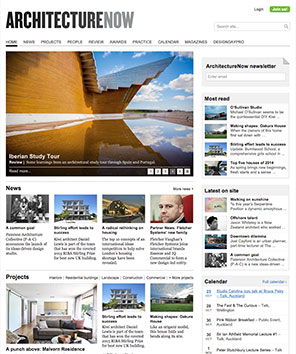Conversation creates
In the latest instalment of Practice in Profile, supported by Resene, Dave Morgan reflects on 85 years of architecture, spatial design and virtual reality at CPRW, and the new direction the studio is embracing.
Eighty-five years is a remarkable span in life, let alone for an architecture practice.
Firms grow, merge and fragment. Or, through the natural course of events, some eventually fade away. CPRW has stood the test of time, evolving in response to the changing needs of clients and the times.
CPRW today traces its genesis back to 1940 when it was established under the leadership of Horace Massey as Massey Beatson Rix Trott Carter & Co. Massey already had a reputation for his stately homes and civic buildings. He was one of New Zealand’s first modernists, bringing a pragmatic-yet-refined European sensibility to the local landscape. Horace Massey was awarded four NZIA Gold Medals: a legacy that has motivated and inspired our predecessors, as well as the CPRW of today. He retired from the practice in the late 1950s.
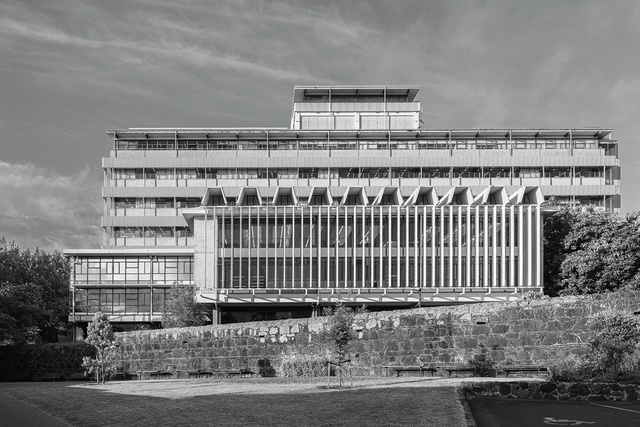
In the succeeding decades, the firm helped shape Auckland’s emerging skyline. It delivered some of the city’s first high-rise office buildings, such as Chelsea House in Fort Street (1962) and the ASB head office at 300 Queen Street (1965), and produced enduring institutional works, such as the University of Auckland’s General Library Building (1964). These were buildings of permanence and civic importance, further establishing the practice as a respectable force in New Zealand’s architectural landscape.
CPRW’s legacy can be appreciated by way of stand-alone, mid-century dwellings in suburban Auckland, memorials and apartments, appliance warehousing for Bond and Bond on Grey Lynn’s Richmond Road (who knew?), and city office buildings.
A NEW WAVE
By the mid-1970s, the practice had morphed into Curtis Penman Read Williams; then, from the mid-late 1980s, it was abbreviated to CPRW. This was not simply a change of name, it also signalled what would be a change of direction.
The 1980s and 1990s bore witness to a wave of transformation in New Zealand’s commercial and banking sectors. In a move away from the pure architecture that had been at the practice’s core for the previous 40 years, CPRW’s primary area of work became the design of interior environments: more specifically, retail banking spaces.
Working alongside ASB, CPRW helped to re-imagine the retail banking experience. This was a close, almost exclusive, relationship that would last nearly 30 years. Several cycles of nationwide roll-outs for ASB demanded not only technical accuracy and attention to detail but, also, a deep understanding of the ways in which the customer journey, branding and repeatable details could be seamlessly blended to deliver enhanced customer and employee experiences.
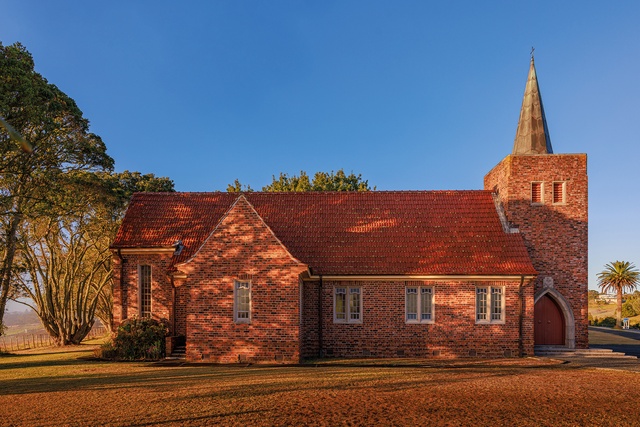
These projects became CPRW’s proving ground for concepts centred around modularity, flexibility and the balance of efficiency with brand expression. They also marked the beginning of a thread that continues today: the practice’s fascination with how people use and experience designed environments.
NEXT-GEN
Two of CPRW’s longest-serving directors retired in 2016. This presented the opportunity to introduce a new generation. Wade Jennings and I became co-owners and directors: the latest custodians of a practice with a proud legacy and a clear vision for the future.
In addition to a decade of working for other practices in Auckland, Wade and I had both spent close to 10 years each working overseas. This included time spent at HOK (Wade) and with Gensler, DEGW and Mackay + Partners in my case. It was the experience and learnings from these practices, and the large scale, technically challenging commercial projects worked on in the UK, Europe and the Middle East — as well as here in New Zealand — that we wanted to bring to CPRW, applying those insights, strengthening existing capabilities and broadening the practice’s ambitions.
Respecting the firm’s history, we recognised that sustaining CPRW’s success, as well as that of staff and clients, would require the right balance between building on proven strengths as well as embracing innovation in daily practice and project delivery.
Taking CPRW into its next chapter began with exposing the firm to new sectors as part of diversifying the historic client base.
We also introduced ‘new’ technologies to the business. Office systems and processes received an overhaul. One key aspect of this was the implementation of Building Information Modelling (BIM) software and Virtual Reality (VR), both of which had the expected beneficial impact on the day-to-day design, documentation and delivery of projects, from inception to completion. The practice had joined the 21st century from a technology standpoint.
DIVERSITY OF PROJECTS
Today, CPRW is involved in a varied range of project types and sizes. A couple of current examples are where CPRW is the lead consultant for the strategic repositioning of 2 Wakefield Street — a 15,000m2 1980s’ office tower opposite Auckland’s Aotea Square — for PAG, and an $11-million upgrade of Waikaraka Park Speedway for Auckland Council, which will deliver much-improved competitor and spectator experiences.
The range of sectors and project types worked on over the 10 years since we joined CPRW provides employees the exposure, challenges and opportunities for professional growth that this diversity affords. There are also benefits for clients in the cross-pollination of ideas and learnings.
There have, of course, been unforeseen challenges — as well as opportunities to learn and adapt — along the way. SARS-CoV-2 was one of them but even the Covid cloud came with a silver lining. A CPRW project was one of the first major local government projects to begin post-lockdown.
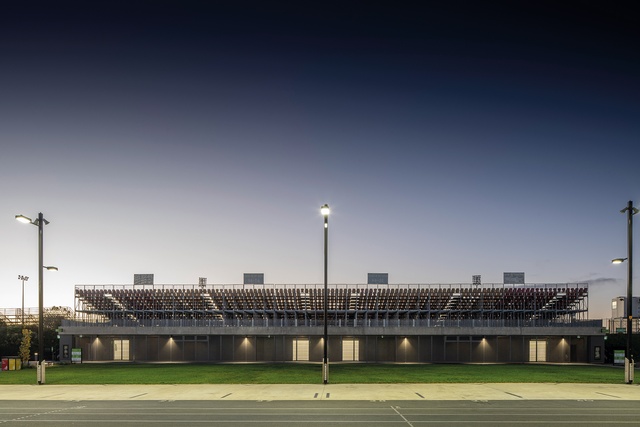
Palmerston North City Council’s Central Energy Trust Arena — the country’s largest multi-purpose sporting complex — hosts more than 2000 events each year. Construction began on 8 May 2020, with the completed stage 1 works later recognised at the Best Awards, earning one silver and two bronze distinctions.
In addition to the 2 Wakefield Street project mentioned previously, and to coin a popular industry phrase, ‘Asset Transformation’ projects have played a key role for CPRW in recent years, with work undertaken for global property fund clients such as HIH (a refurbishment of 8 Tangihua Street, previously the GE Building) and Deka Immobilien Investment GmbH (a repositioning of the old Lumley Centre, now Shortland & Fort). The latter was recognised by the Best Awards (a gold award) and NZIA (an Auckland Branch award). Other satisfying achievements for our team have been seeing work for LyLo Auckland (a lifestyle budget hotel) win the Best Hotel of the Year — Conversion award at the Australasia-Pacific Hotel Design Awards, and Air New Zealand’s Premium Check-in at Auckland International Airport as a finalist at the Best Awards.
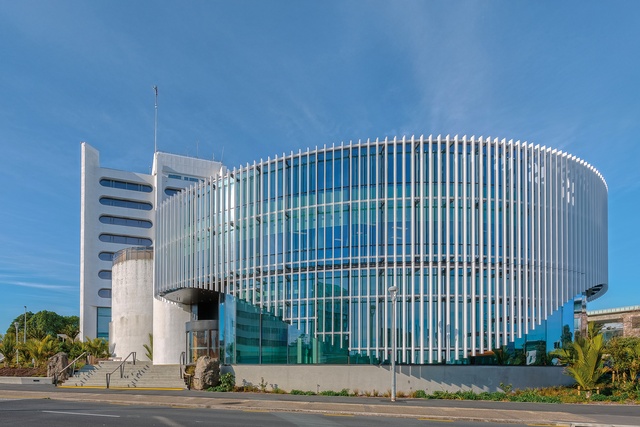
We’ve also begun to retrace past steps in the civic realm. CPRW was the architect and workplace planner/designer for the civic centre tower refurbishment and new west annex extension at Auckland Council’s Manukau Southern Hub. The completion of this 9500m2 project has delivered a significant uplift in building performance — enhancing energy efficiency, workplace functionality and occupant well-being.
CONVERSATION CREATES
At the heart of CPRW’s practice are people and a belief that conversation aids creation.
This ethos is both philosophical and practical. It means that architecture and design possibilities emerge through dialogue: between client and designer, between architect and designer, between site and brief, between heritage and possibility. The practice is not tied to a single aesthetic agenda; instead, we seek clarity of plan, responsiveness to context, and attentiveness to the needs of the businesses and people who will ultimately occupy and use the spaces.
“Egos are checked at the door” is more than a studio joke. It is a cultural principle we tried to embody from the outset of our tenure: one that allows collaboration to flourish. The best ideas can come from anywhere in the room, and our processes are structured to encourage them out and capture them.
At our core, we are a small practice, agile and responsive. We expand as required but, as business owners and directors, both Wade and I enjoy time spent using the colouring-in pencils and being readily accessible to staff and clients alike. This collaborative approach has been enhanced by technology. CPRW was one of the first local firms to recognise the potential for using a combination of the latest technology as a means to streamline the design and evaluation process.
We developed our own CPRW VR platform called VRTUE (Virtual Reality Touchstone for User Experiences). VRTUE takes the form of both static and animated simulations: essentially, the gamification of traditional VR. Our animations provide an intelligent and interactive platform for the observation and analysis of the ways in which future environments might perform and how inhabitants will likely behave within them. This enables many and varied stakeholders, each with a different perspective, to provide informed and constructive ‘firsthand’ feedback on any proposed design through pre-occupation evaluation. One client remarked: “We strongly believe that the way CPRW has integrated VR with AI is a game-changer in both design verification and user-group communication.”

We’ve been fortunate to work with Air New Zealand on a range of challenging and innovative projects, encompassing check-in, lounge, engineering and workplace environments over the years. In late 2017, one of these projects provided us with an early opportunity to put VRTUE to the test, using an animated VR simulation for a new airport terminal environment. We’d been pushing the case with the landlord/developer for an increase in depth from the building envelope to the main baggage collector belt; one of several reasons was improved customer flow.
The landlord had maintained a healthy resistance and was subsequently invited by our client to a VR session where we had modelled the terminal and, using known customer personas/behaviours, etc., created an animated VR simulation illustrating how the space — and occupants — might be impacted at certain times of the day by flight schedules, passenger flows and congestion, etc. The landlord, arms firmly folded, was asked to pop the VR goggles on, be a good sport and give it a try. Reluctantly, they agreed, remained expressionless for about 20 seconds, then, waving the hand controllers about like six guns, exclaimed: “F**k, this is great!” Forty minutes later, after walking around what seemed like every square metre of the VR model and observing the simulated user behaviours and potential issues, they removed the goggles. The depth was subsequently increased.
There have been other occasions, when designing interior environments, where staff and clients have been found lying on the office floor, VR goggles on, looking up, pointing at ceilings and refining details. We have quite the archive of video ‘evidence’ that may or may not become a highlights reel for the IG.
On the subject of archives, that is one aspect of the practice that never fails to surprise and delight.
What is often intended as a quick, five-minute visit to the company storage unit sometimes turns into a 60-minute discovery session as old drawing rolls are taken out of tubes or a plan drawer rummaged through. Everything has been digitised but nothing beats the smell of freshly unfurled 80-year-old tracing paper in the morning.
The practice was a mere 39 years of age when Apocalypse Now was released.
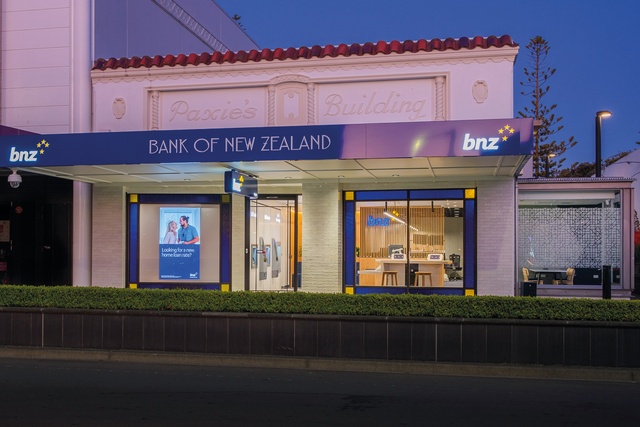
WHAT’S IN A NAME?
When CPRW celebrated its 80th anniversary in 2020, we took the opportunity to re-imagine our public identity as we continued to work on a strategic shift away from the traditional client base.
To say CPRW “had maintained a low profile” during the 1990s, 2000s and 2010s would be an understatement. Working with Insight Creative, a new brand identity was developed — crisp, contemporary and confident.
The rebrand was not simply cosmetic. It distilled the qualities that had enabled the firm’s longevity: agility, openness and clarity of purpose, not to mention some pretty good architecture and design along the way. It also helped to set the tone for CPRW’s next chapter.
One short-lived idea was a possible name change. But that seemed wrong, almost disrespectful, and would go against everything that had attracted us to the practice in the first place. Lumen accipe et imperti: receive the light and pass it on.
EIGHTY-FIVE AND BEYOND
As CPRW approaches its 85th birthday, the challenge is not simply to celebrate longevity but to remain vital.
From early high-rises to contemporary workplace, retail, sport and hospitality environments, the practice’s projects are markers of their times. What unites them is a clarity of intent, a responsiveness to those using them and having some fun as an office along the way.
Adaptability is embedded deep in CPRW’s DNA: from Massey’s modernist beginnings, through to those original banking roll-outs of the 1980s, ’90s and 2000s, and on to today’s digitally enhanced, user-centric practice.
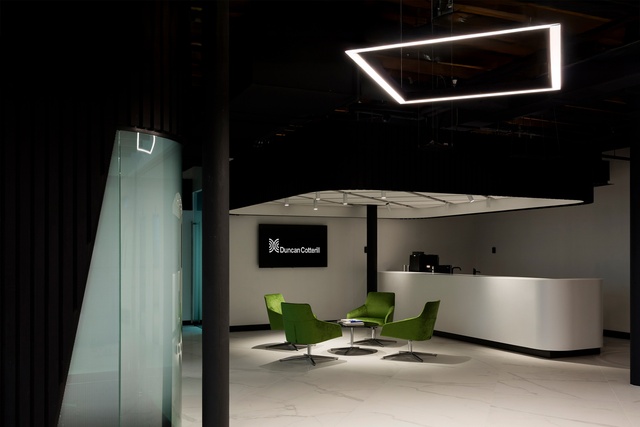
With a CPRW century now in sight, we have no doubt that the next 15 years will be shaped by profound shifts, involving the environment as well as digital integration, along with fast-evolving expectations of work/life balance. CPRW is well placed to help shape the future of the built environment here in New Zealand — delivering sustainable, people-centred designs that inspire, adapt and contribute positively to the communities they serve.
Endurance is not owed to conservatism but to considered reinvention. The practice has continually refreshed its tools, its sectors and its identity — while holding fast to a core belief that good architecture and good design are the result of collective conversations.
Eight and a half decades on, CPRW continues that conversation. It is an architecture of continuity and change, rooted in history yet oriented towards the future — a design methodology that remains open, collaborative and engaging.
One thing is without doubt. In the coming years, the practice can thrive and be successful only thanks to the dedication and commitment of those who show up every day, checking egos at the door, conversing and making their collective contributions to the latest CPRW chapter.

CPRW is an architecture and design practice based in Auckland, New Zealand. The focus of our work is well-crafted architecture and spatial design. For 85 years, our practice has enjoyed working with like-minded people to enhance the spaces and places in which we work, live and play.


